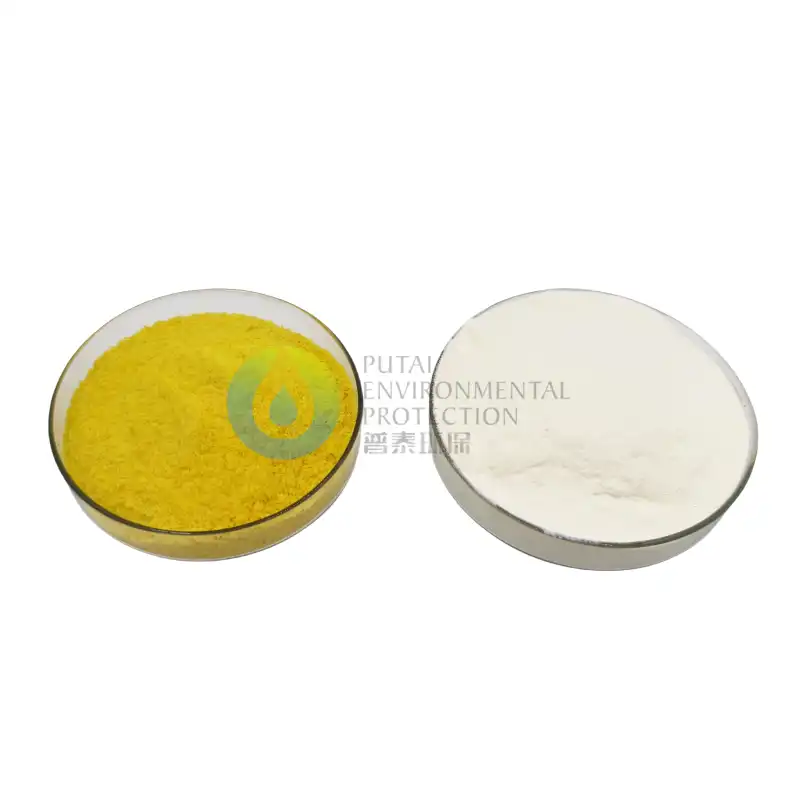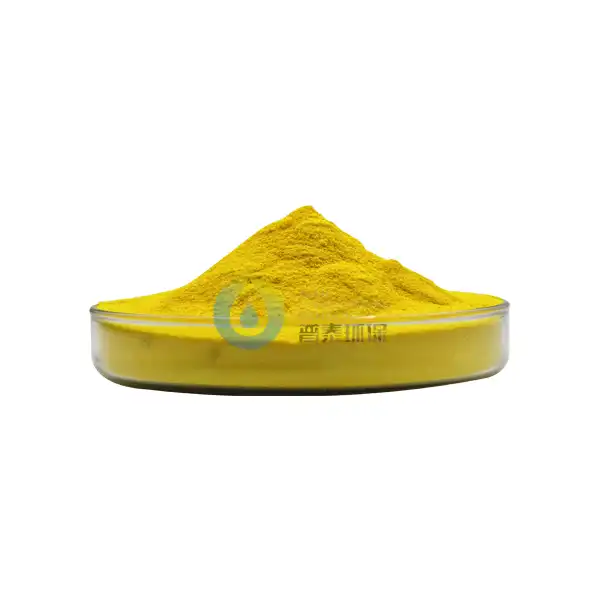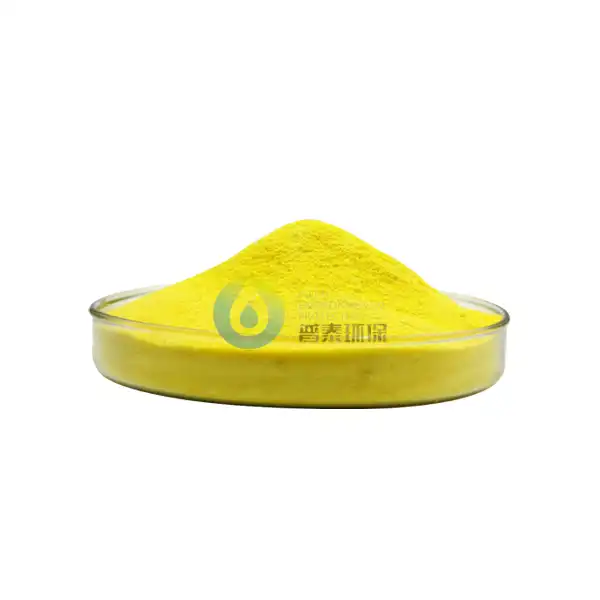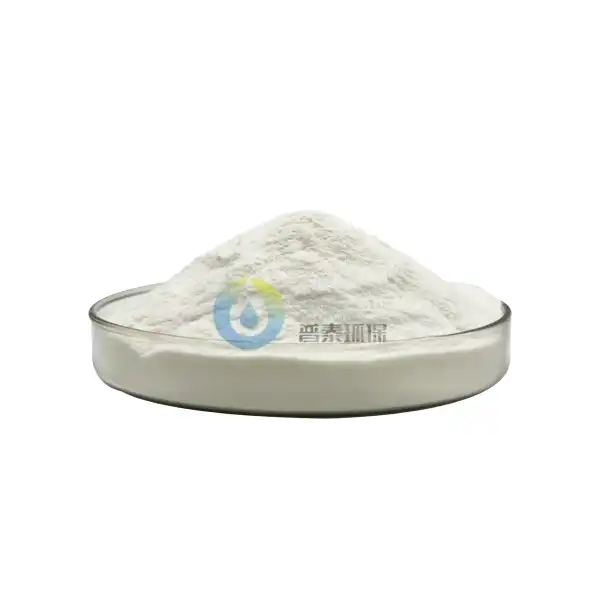How to Store & Handle Industrial Grade PAC Safely?
Industrial grade Polyaluminum Chloride (PAC) is a widely used coagulant in water treatment processes. While its effectiveness is undeniable, proper storage and handling are crucial to maintain its efficacy and ensure safety. This comprehensive guide will delve into the best practices for storing and handling industrial grade PAC, covering everything from bulk storage tanks to personal protective equipment (PPE) and preventing crystallization.
Best practices for industrial PAC bulk storage tanks
Proper storage of industrial grade PAC is paramount to maintaining its quality and effectiveness. Here are some key considerations for bulk storage tanks:
Tank Material Selection
Choose tanks made from materials resistant to PAC's corrosive nature. Fiberglass-reinforced plastic (FRP), high-density polyethylene (HDPE), or lined steel tanks are suitable options. Avoid using unlined metal tanks, as they can corrode and contaminate the PAC solution.
Temperature Control
Maintain a consistent temperature in the storage area. Ideally, keep the temperature between 10°C and 30°C (50°F to 86°F). Extreme temperatures can affect PAC's stability and performance.
Ventilation
Ensure proper ventilation in the storage area to prevent the accumulation of fumes. This is crucial for maintaining a safe working environment and preserving PAC quality.
Regular Inspections
Conduct routine inspections of storage tanks, valves, and piping systems. Look for signs of wear, corrosion, or leaks. Address any issues promptly to prevent potential hazards.
Agitation System
Install an agitation system in the storage tank to prevent settling and maintain uniform concentration. This is particularly important for long-term storage.
Secondary Containment
Implement a secondary containment system to catch any potential spills or leaks. This adds an extra layer of safety and environmental protection.
Does industrial grade PAC require special PPE?
Yes, handling industrial grade PAC necessitates the use of appropriate personal protective equipment (PPE). The corrosive nature of PAC and potential for splashes or spills make proper PPE crucial for worker safety.
Eye Protection
Wear chemical-resistant goggles or a full-face shield to protect against potential splashes. Regular safety glasses are not sufficient for handling PAC.
Skin Protection
Use chemically resistant gloves made from materials such as neoprene, nitrile, or butyl rubber. Wear a chemical-resistant apron or full-body suit for additional protection during handling and transfer operations.
Respiratory Protection
In well-ventilated areas, respiratory protection may not be necessary. However, in cases of inadequate ventilation or risk of inhalation, use a NIOSH-approved respirator with acid gas cartridges.
Footwear
Wear chemical-resistant boots or overshoes to protect feet from potential spills or splashes.
Emergency Equipment
Ensure easy access to eyewash stations and safety showers in areas where PAC is handled or stored. Train employees on the proper use of this emergency equipment.
Training and Education
Provide comprehensive training to all employees handling PAC. This should include proper use of PPE, emergency procedures, and safe handling practices.
Preventing crystallization in PAC solutions
Crystallization can significantly impact the effectiveness of industrial grade PAC. Here are strategies to prevent this issue:
Maintain Proper Concentration
Keep PAC solutions within the recommended concentration range, typically between 10% and 50%. Overly concentrated solutions are more prone to crystallization.
Temperature Control
Maintain a stable temperature in storage and handling areas. Avoid exposing PAC solutions to extreme cold, which can trigger crystallization.
Regular Agitation
Implement a regular agitation schedule for stored PAC solutions. This helps maintain uniform concentration and prevents the formation of crystals.
Proper Dilution Techniques
When diluting PAC, always add the PAC to water, not water to PAC. This prevents localized high concentrations that can lead to crystallization.
Use of Anti-Crystallization Agents
Consider using anti-crystallization agents specifically designed for PAC solutions. These can help maintain stability, especially in challenging storage conditions.
Regular Quality Checks
Implement a regular testing schedule to monitor PAC solution quality. This can help identify potential issues before they lead to significant crystallization problems.
Proper Piping Design
Design piping systems to minimize areas where PAC can stagnate or accumulate. Use materials resistant to PAC's corrosive nature and implement regular flushing protocols.
Conclusion
Handling and storing industrial grade PAC safely requires a comprehensive approach. From selecting the right storage tanks and implementing proper PPE protocols to preventing crystallization, each aspect plays a crucial role in maintaining PAC's effectiveness and ensuring worker safety.
Remember, the key to success lies in consistent implementation of best practices, regular training, and staying updated on the latest safety guidelines. By following these recommendations, you can optimize your PAC usage while prioritizing safety and environmental responsibility.
Are you looking for high-quality industrial grade PAC and expert guidance on its safe handling and storage? Look no further than Xi'an Putai Environmental Protection Co., Ltd. With over 34 years of experience in water treatment chemicals, we're committed to providing top-notch products and unparalleled support. Our team of experts is ready to assist you in optimizing your water treatment processes while ensuring the highest standards of safety and efficiency. Don't compromise on quality or safety - choose Xi'an Putai for all your PAC needs. Contact us today at sales@ywputai.com to learn more about our products and services.
References
1. Johnson, M. (2021). Industrial Chemical Storage: Best Practices for Safety and Efficiency. Chemical Engineering Quarterly, 56(3), 78-92.
2. Smith, A., & Brown, L. (2020). Personal Protective Equipment in the Chemical Industry: A Comprehensive Guide. Journal of Occupational Safety, 15(2), 112-128.
3. Chen, Y., et al. (2019). Crystallization Prevention in Polyaluminum Chloride Solutions: Mechanisms and Strategies. Water Treatment Technology, 42(4), 301-315.
4. Wilson, R. (2022). Safe Handling and Storage of Water Treatment Chemicals: Industry Standards and Best Practices. Environmental Engineering Review, 29(1), 45-61.





